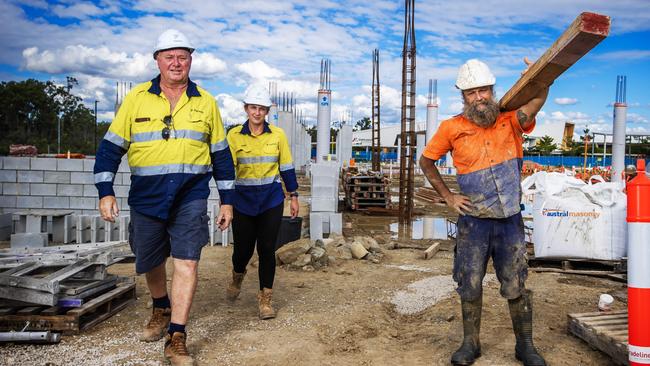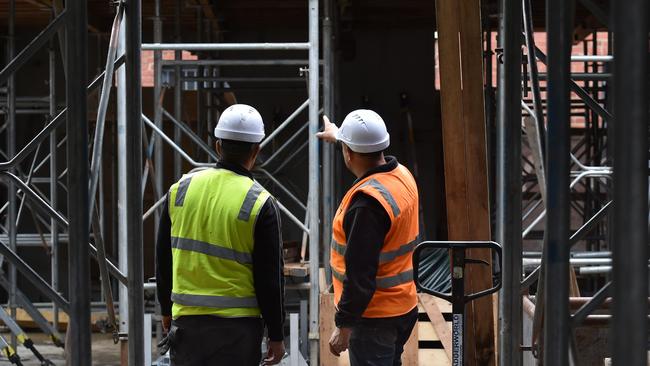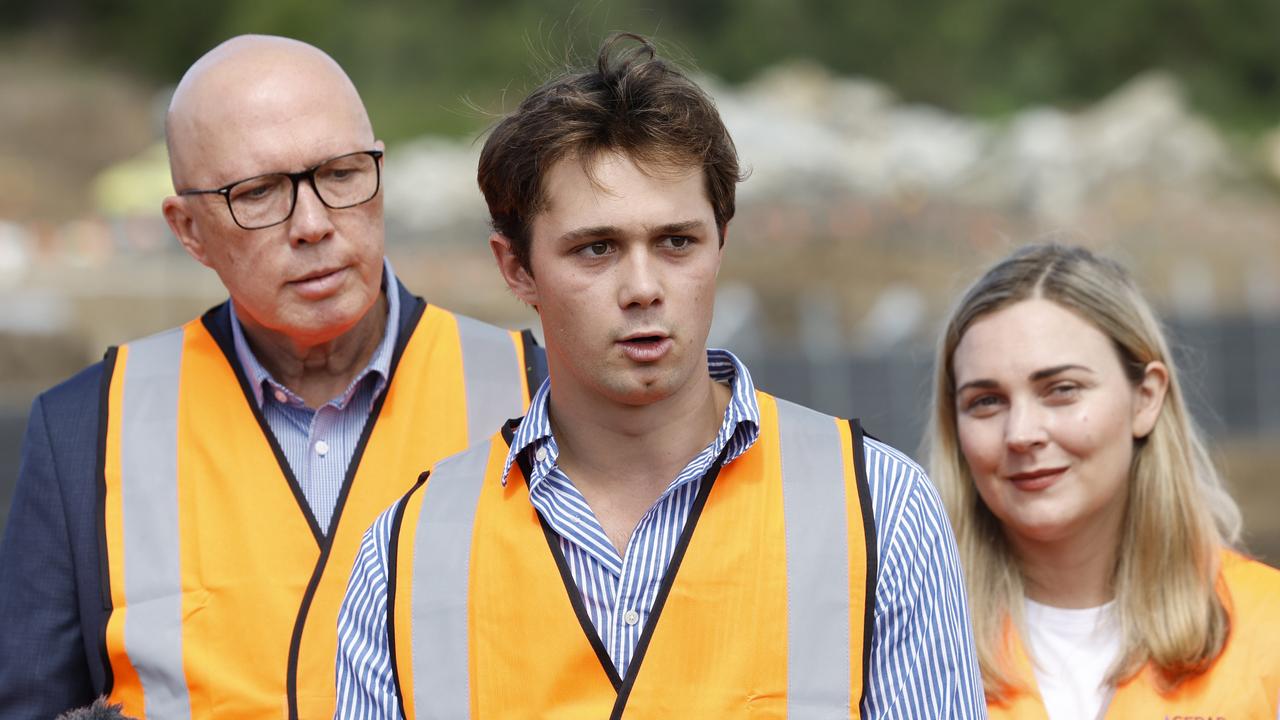Care economy jobs grow 70 times more than the construction workforce during first two years of Albanese government
Builders warn they are falling drastically short of workers as growth in care economy jobs has been 70 times faster than the rise in construction sector roles in the past two years.

The growth in care economy jobs has been 70 times faster than the rise in construction sector roles in the first two years of the Albanese government, with builders warning Labor that they are falling drastically short of the workers needed to meet its housing targets.
The number of employees in the construction industry rose by just 2772 to 1.22 million in the two years to June, according to analysis of Bureau of Statistics data by The Australian.
With the size of Australia’s workforce rising by more than 850,000 people over the same period, the growth in the construction industry has been outstripped by a host of other sectors, including roles in social assistance and healthcare or “care economy” sector, which has swelled by more than 336,000 to 2.37 million.
Construction lobby group Master Builders Australia said the industry’s workforce needed to increase by 130,000 by 2029 if Labor were to have any chance of delivering on its promise to build 1.2 million “well-located” homes in five years alongside additional supporting infrastructure.

While the group’s chief executive Denita Wawn said there would be “no quick fix” to the continued workforce shortage facing the building and construction sector, she advocated for a whole-of-government approach across migration, skills and industrial relations portfolios.
“Despite challenges, the industry is in a unique position to grow and innovate,” Ms Wawn said. “There is a strong pipeline of work for the industry across the housing, commercial and civil sectors, presenting a great opportunity for people to join.”
Included among the MBA’s recommendations to government is the establishment of a specialist “construction skills pathway visa” akin to similar programs in Canada, New Zealand and Britain, providing applicants with options for permanent residency.
Apprenticeships in the building and construction industry should be incentivised via commencement and completion bonuses to apprentices and their employers, the MBA has recommended, alongside a wage subsidy throughout the duration of the apprenticeship.
Labor is undertaking a strategic review into Australia’s apprenticeship incentive system.
The MBA also advocated for state, territory and commonwealth governments to harmonise occupational licensing requirements and streamline recognition of internationally comparable qualifications.
That increase of 130,000 new additional workers would need to come on top of the significant number of people permanently exiting the industry each year, which the MBA estimated was more than 100,000 due to retirement of Baby Boomer tradies and a movement of workers to different sectors.

Responding to the limited increase in the construction workforce, Housing Minister Clare O’Neil’s spokesman said the government was working to ease continued labour shortages in the building industry.
“We came into government with record labour shortages in the construction sector following a decade of dysfunction on skills policy,” he said.
More than 21,000 students had enrolled in construction-related fee-free TAFE courses since Labor was elected, with the government investing in excess of $90m in vocational training for jobs in the housing and construction sector. Labor also granted 10,000 visas to skilled construction workers last year.
“This is not an overnight fix and there’s more work to do, but the commonwealth is back investing in training more tradies,” the spokesman added.
Independent economist Saul Eslake said increased federal and state government spending on social services had driven an increase in care economy roles, while the construction sector had fallen victim to Australia’s immigration system.
“Although borders have been reopened since March 2022 and there’s been a surge in overall immigration numbers since then, there hasn’t been much by way of immigration of skilled construction tradespeople in that surge,” he said.
“Notwithstanding strong demand for people with skills in construction trades, they simply haven’t been available.”
In recent years, Australia’s jobs market has experienced a shift in its composition towards labour-intensive, low-productivity sectors, including education, healthcare and retail trade.



